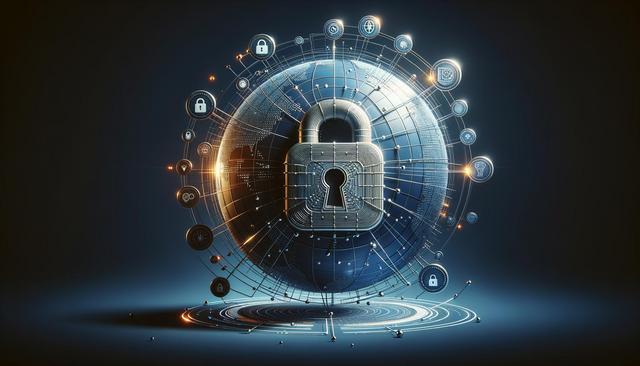Understanding the Importance of Cyber Security
Cyber security is no longer a concern just for large corporations or tech-savvy individuals—it’s a necessity for anyone who uses digital devices. With increasing dependence on online platforms, from banking to social networking, the need to Protect Your Data has become critical. Every time you connect to the internet, your personal information, financial details, and private communications are at risk of being intercepted by malicious actors. Implementing even Simple Steps to Secure Everything can drastically reduce your vulnerability to cyber threats.
Cyber criminals use a variety of tactics to gain unauthorized access to sensitive information. These can include phishing emails, malware, ransomware, or exploiting unpatched software. Unfortunately, many people only realize the importance of cyber security after they’ve already experienced a breach. That’s why adopting a proactive approach is essential—not just to respond to threats but to prevent them from occurring in the first place.
Top 3 Signs You’ve Already Been Hacked
Recognizing the early signs of a cyber attack can help you take swift action and mitigate potential damage. Here are the Top 3 signs you’ve already been hacked:
- Unusual account activity: If you notice login attempts from unfamiliar locations or changes you didn’t make, it’s a red flag that someone else may have access to your account.
- Slow system performance or unexpected pop-ups: Malware often slows down your device or bombards you with ads as it tries to extract your personal data.
- Unauthorized transactions or messages: Charges you didn’t authorize or messages sent from your email or social media accounts could indicate a compromised system.
If you encounter any of these signs, it’s essential to act quickly. Change your passwords immediately, run a full security scan on your devices, and notify impacted institutions like your bank or email provider. A quick response can prevent further damage and help you regain control of your digital life.
Online Safety First: Creating a Secure Digital Environment
Practicing Online Safety First starts with awareness and good habits. Simple, everyday actions can strengthen your defenses against cyber threats. Here’s how you can build a safer online environment:
- Use strong, unique passwords for each account and update them regularly.
- Enable two-factor authentication wherever possible.
- Keep your software and applications up to date to patch known vulnerabilities.
- Avoid clicking on suspicious links or downloading unknown attachments.
- Use a reputable antivirus program and firewall to add extra layers of protection.
These practices may seem basic, but they form the foundation of a solid cyber security strategy. When consistently applied, they serve as an effective barrier against many common threats.
Simple Steps to Secure Everything You Own
Securing your digital world doesn’t have to be complex. Even Simple Steps to Secure Everything you own can go a long way in defending against cyber risks. Start by assessing your current online behavior and identifying areas for improvement. Then, implement practical solutions like these:
- Encrypt sensitive files and regularly back up important data to an external drive or cloud storage.
- Set up alerts for account logins and financial transactions to monitor unusual activity.
- Limit the amount of personal information you share online, especially on social media platforms.
- Secure your home Wi-Fi network with a strong password and consider using a VPN for added privacy.
By gradually improving your security measures, you can build a more resilient digital lifestyle. It’s about creating habits that prioritize safety without disrupting your daily routines.
Stay Secured 24/7 with Continuous Vigilance
Cyber threats don’t take breaks, and neither should your defenses. To Stay Secured 24/7, it’s important to adopt a mindset of continuous vigilance. This means regularly reviewing your security settings, staying informed about new threats, and being cautious with every digital interaction. Consider these ongoing practices:
- Monitor your accounts and devices for suspicious activity on a regular basis.
- Stay updated with the latest cyber security news and trends from credible sources.
- Educate family members or employees about safe online practices to reduce collective risk.
- Schedule periodic security audits to ensure your protection measures are up to date.
By embedding cyber awareness into your daily habits, you foster a culture of safety that extends beyond individual devices. It’s not just about reacting to threats—it’s about preventing them through thoughtful, consistent actions.
Conclusion: Taking Control of Your Digital Security
Cyber security is an ongoing journey, not a one-time fix. Whether you’re managing personal devices or leading a small business, the responsibility to Protect Your Data starts with you. Recognizing the Top 3 signs you’ve already been hacked, practicing Online Safety First, and applying Simple Steps to Secure Everything can empower you to Stay Secured 24/7. With the right knowledge and habits, you can take control of your digital safety and reduce your exposure to cyber threats. Start small, stay consistent, and keep security top of mind in every online interaction.




Leave a Reply